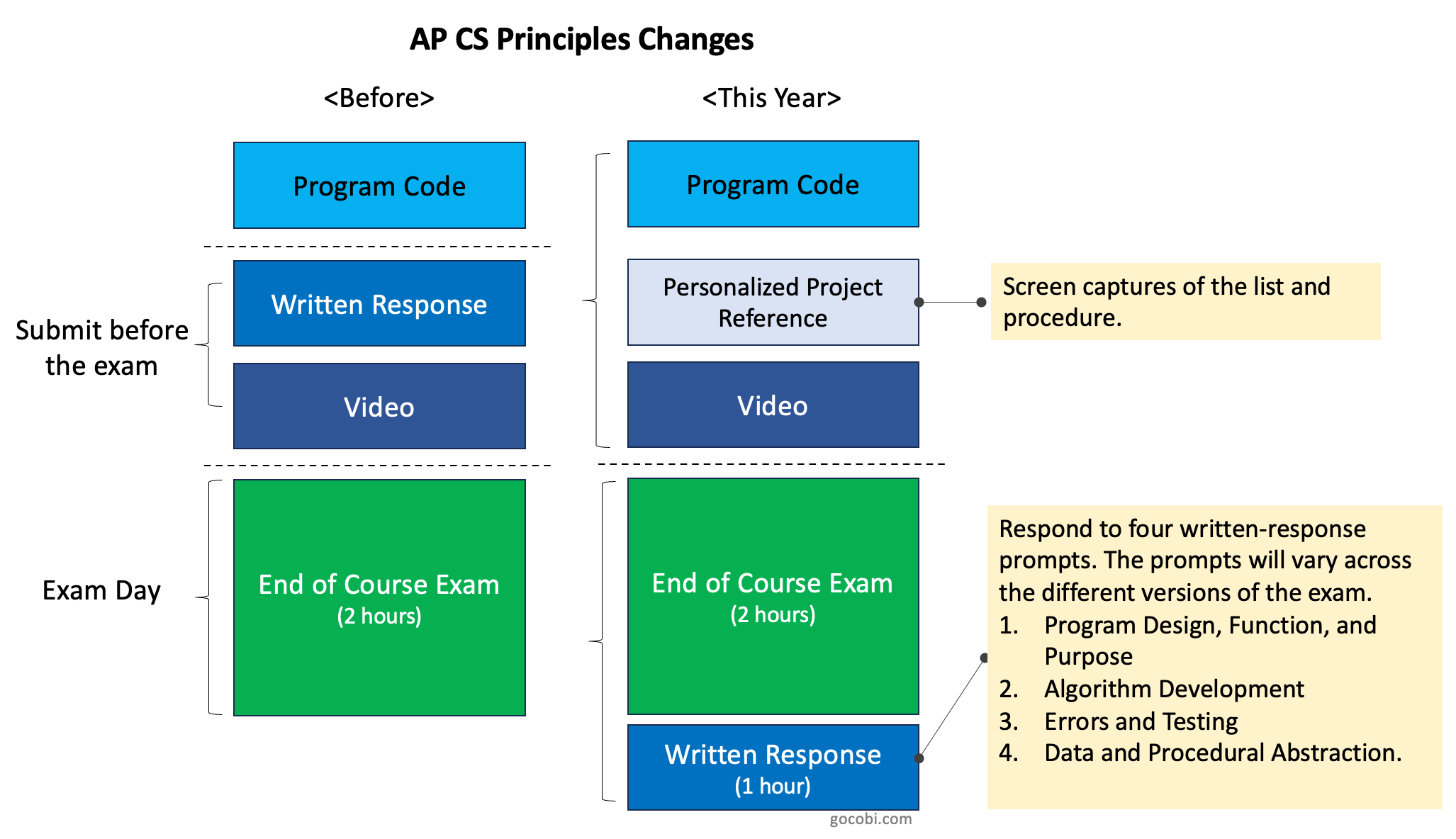Big Change! AP CS Principles Performance Task
Big change is happening. College Board recently announced that this year, the AP CS Principles Performance Task and the End of Course Exam are changing. In this video, we’ll look at the big changes and go over strategies for how we can best prepare for this.
Here's an overview of the changes:

- Students no longer submit a Written Response. Instead, they submit a Personalized Project Reference (PPR) which is a screen capture of their project code that contains list and procedure. No comments are allowed in the PPR!
- An additional Written Response hour is added to the End of Course Exam (May 15, 2024). Students respond to four questions referencing the Personalized Project Reference they submitted in the previous month (Apr 30, 2024).
The Exam Day
Section I: End-of-Course Multiple-Choice Exam
70 multiple-choice questions | 120 minutes | 70% of score | 4 answer options
- 57 single-select multiple-choice
- 5 single-select with reading passage about a computing innovation
- 8 multiple-select multiple-choice: select 2 answers
[NEW] Section II: Create Performance Task: Written Responses
- 4 written response prompts | 60 minutes end-of-course exam | 30% of score
- Create performance task program code, video, and Personalized Project Reference | 9 hours in-class
The Four Categories
The specific prompts will vary across the different versions of the exam. The four questions are each pulled from the four learning objective (LO) categories which are:
- Program Design, Function, and Purpose
- Algorithm Development
- [New] Errors and Testing
- Data and Procedural Abstraction
Students should be prepared to respond to prompts about their program that assess any of the following learning objectives:
Prompt Category | Required Learning Objectives |
|---|---|
Program Design, Function, and Purpose | Students should be prepared to respond to prompts about their program that assess any of the following learning objectives:
|
Algorithm Development | Students should be prepared to respond to prompts about their program that assess any of the following learning objectives:
|
Errors and Testing | Students should be prepared to respond to prompts about their program that assess any of the following learning objectives:
|
Data and Procedural Abstraction | Students should be prepared to respond to prompts about their program that assess any of the following learning objectives:
|
🗒️ Download 2023 Student Handout
How to prepare:
- Make sure the Code Project meets all of the required learning objectives (LOs) in the four categories.
- Practice answering the LOs with the Personalized Project Reference before submitting it.
- Practice answering the LOs with the Personalized Project Reference as you near the Exam date.
For the latest updates, visit the College Board's website: https://apcentral.collegeboard.org/courses/ap-computer-science-principles/exam
Related and resources:

